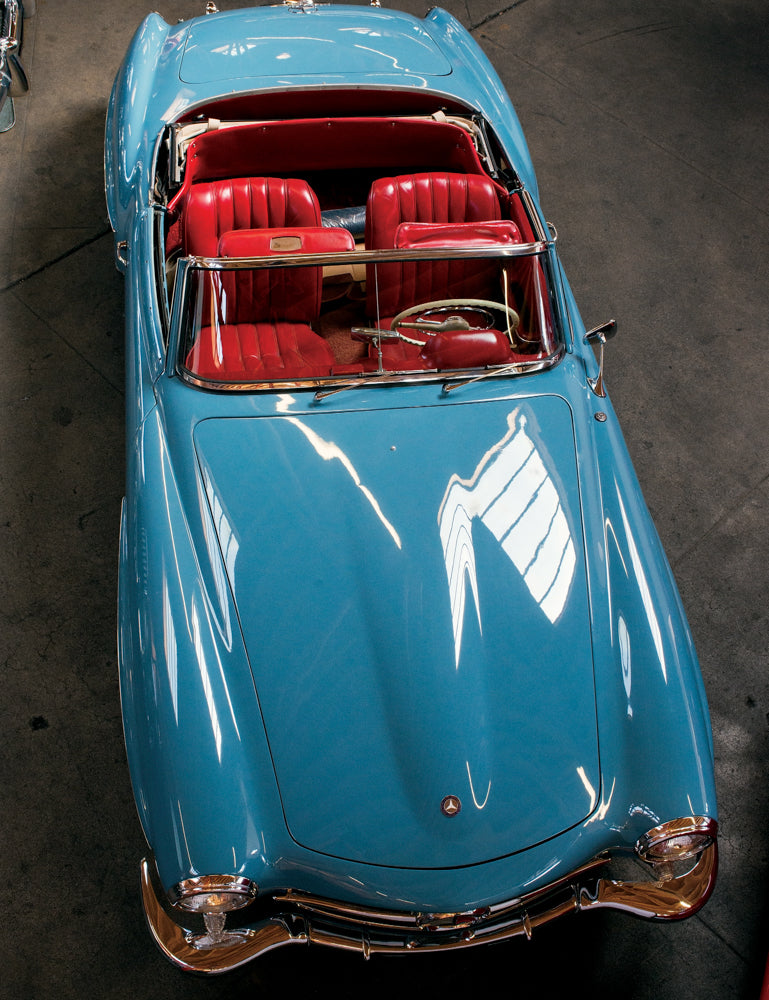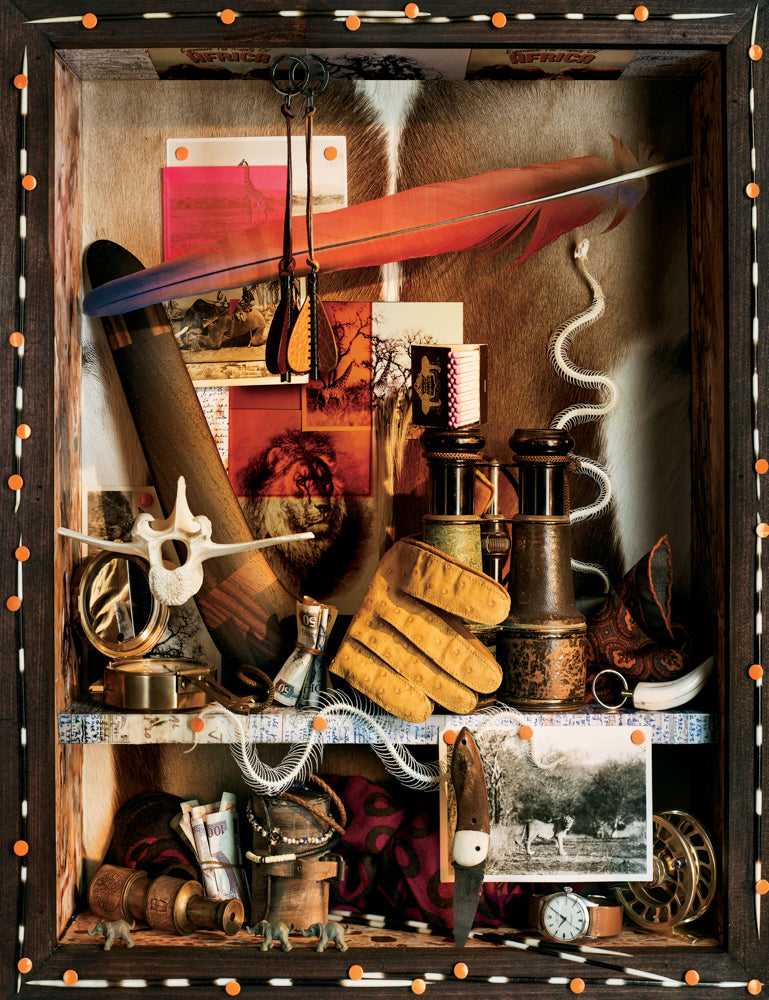
Max Chilton
MAX CHILTON

BUILT FOR SPEED
“You hear a lot of talk about the risks of motor racing, but actually riding a horse is more dangerous. You’re statistically more likely to get killed driving to the track than racing on it.”
Three days after I interviewed Britain’s most exciting new Formula One driver, Max Chilton, age twenty-three, an alloy-rimmed tire weighing some forty pounds flew loose from Kimi Räikkönen’s disintegrating Ferrari one minute into the British Grand Prix at Silverstone and nearly killed him.
Half a second before impact, as he saw Räikkönen’s car breaking apart ahead of him, Chilton slammed on the brakes. With a quarter-second to go, he swerved to the right, burning rubber as he careened across the track. A tenth of a second before impact, Chilton did what he always does when death rears its ugly head: he closed his eyes and hoped for the best. He was fortunate. The rim smashed into the nose of his Marussia, missing his body by inches.
Chilton’s lightning-fast reflexes probably saved his life at Silverstone. I got to see those reflexes up close at the Marussia F1 factory two hours outside of London when I asked him if he’d be willing to test them. He gamely agreed, the challenge unseen.

I produced a crisp ten-pound note, held it upright at its top corners, and instructed Chilton to position his thumb and forefinger at either side of the note near the bottom. When I let it go, I told Chilton, if he caught it, he could keep it. If he missed it, he owed me a tenner. Deal?
“Deal.”
I’ve won hundreds of pounds with this bet over the years. It looks easy, but not once has anyone caught the bill. By the time his or her central nervous system has realized it has started to drop — by the time the brain has got round to sending an electrical impulse all the way to the hand — it’s all over. The note is fluttering to the floor, and I am ten (or twenty, or fifty) quid richer.
There was a noticeable change in atmosphere as Chilton positioned his digits and stared at the bill with laser-like focus. For the first time that day, Chilton was really concentrating. This, I thought to myself, is what he must be like on the grid.
He waited. I waited. We smiled at each other. Then I released the bill. He caught it at the halfway point, and grinned like a schoolboy who had just scored ten out of ten on a spelling test.
I have never seen anyone get anywhere close to catching the note before it slips through the range of their finger and thumb, let alone catch it halfway like Chilton did.
The problem with good reflexes is that you either have them or you don’t. You can exercise and play sports to help keep them sharp, but you can’t really, in any significant way, influence the speed at which your synapses fire off and read back electro-chemical signals. You can’t train for reaction speed.

Being an F1 driver is all about reaction time, so it should come as no surprise that piloting a car at 200 miles per hour around a twisting, curling track while dodging twenty-one other drivers (and bits of their cars) is not something you can train for either.
The most crucial moment of the race, after all, is the start — five red lights illuminate in sequence, and when the red lights go out (after a random time delay over which the race controller has no say), the race is underway — and that is purely a reaction test.
“If you’re a tennis player, you play lots of tennis, and if you’re a golfer, you play lots of golf,” says Chilton. “But Formula One isn’t really like that. You can’t be out there driving a racecar round the track every weekday.”
Not only would it not help much, but the two hundred–odd engineers and mechanics who give over their lives to tending their beloved machines, wiping oil from their engines with the same tenderness a mother wipes the chin of her infant, just wouldn’t let you. When I check out a car with Chilton after our interview has ended, an engineer hovers nearby. I have no doubt he will put me on the deck if I so much as touch its carbon-fiber shell.
So Chilton trains using meditation and visualization. He commits to memory every chicane and straight of the course he is due to race next, then closes his eyes and pretends he is driving round the track in real time, changing gears, hitting the throttle, and touching the brakes. His sometimes minute, sometimes dramatic adjustments to the imaginary steering wheel are accompanied by microscopic movements of his head.
He times each lap. “As the race draws nearer, I am completing the circuit in my visualization in almost exactly the same time as it takes me to do a circuit on the course,” he says. This is how he knows he is ready.

Chilton began racing as a nine-year-old kid, in go-karts. His dad — who conveniently made around $100 million when he sold an insurance business in 2008 — is a passionate petrolhead (he subsequently bought the Carlin racing team), and Chilton also idolized his brother, Tom, who competes in the World Touring Car Championship. The Chiltons, it would seem, have a high-octane mix of blood and gasoline pumping through their veins.
“It’s in the go-karts that you learn your craft,” says Chilton. “If you look at how karting champions drive, it’s a very distinctive style.”
Chilton’s determination is such that he won his last ever kart race despite competing with a broken rib. It was cracked by the sheer pressure of his body being squeezed against the wall of his kart when taking a corner. “Agony,” he recalls wryly, “but I was in the lead, I was winning, so I had to finish.”
He crashed “many times” in karts and has crashed “many times” since. “It’s terrifying when it happens,” he admits. “In Monaco, in 2010, I went straight over the back of another car at turn one. But the mind has an amazing ability to blank it out. There’s a point when you know it’s going to happen, and at that moment I tend to just shut my eyes and hold my belts to protect my wrists. On the first lap of every Grand Prix there’s always some contact and there are bits of car whizzing over your head, but driving an F1 car is like flying a fighter jet on the ground, and you don’t have time to notice it.”
Chilton was a huge Schumacher fan as a kid, and his expression darkens with concern as conversation inevitably turns to the motor-racing legend’s skiing accident last year.

“He was driving Formula One for how many years? He had big accidents and walked away — and then something like that happens? It seems that, luckily, he is on the mend, but it does put it all into perspective. People talk about the risks of motor racing, but actually riding a horse is more dangerous. You’re statistically more likely to get killed driving to the track than racing on it.” No doubt this is all true. And Chilton is nothing if not a very cool customer.
But at Silverstone a few days later, as the engines roared and those red lights on the gantry began to light up one by one, had Chilton known what was waiting for him on the Wellington straight sixty seconds later, I doubt he would have felt quite so statistically reassured. This time, thanks to those reflexes, he got lucky.
Oh, and I should probably also mention that he gave me back my tenner.


